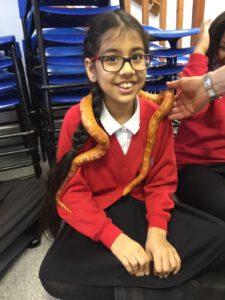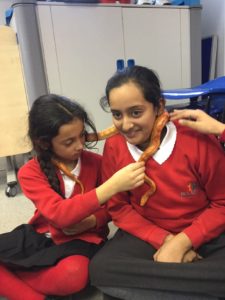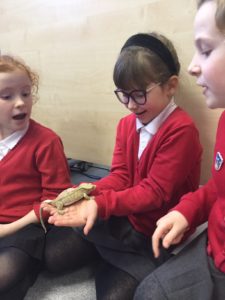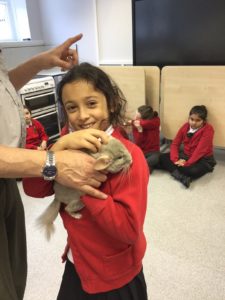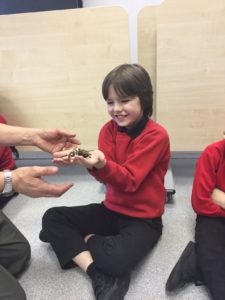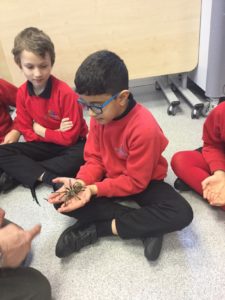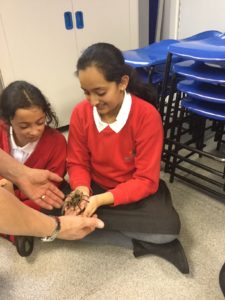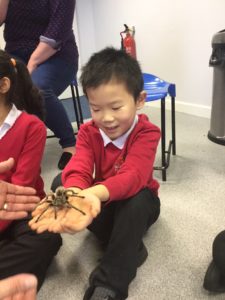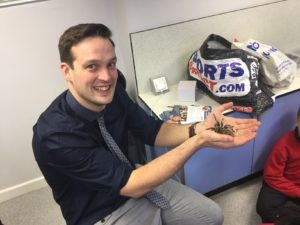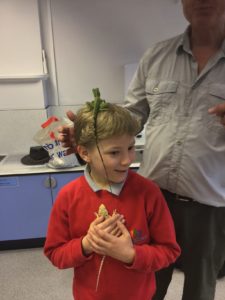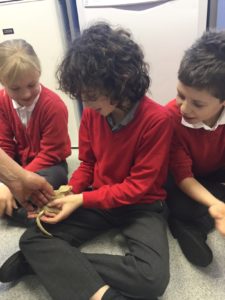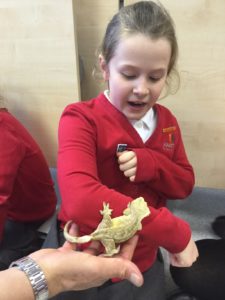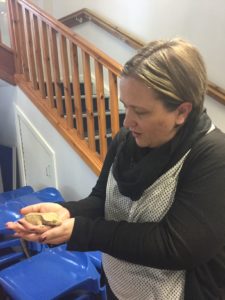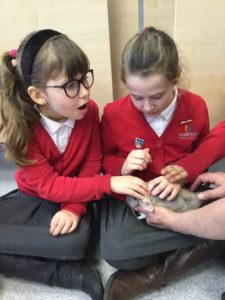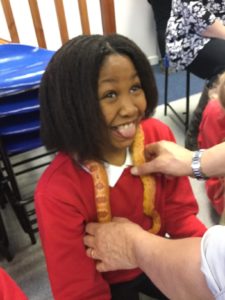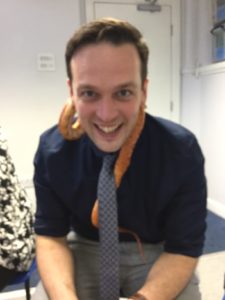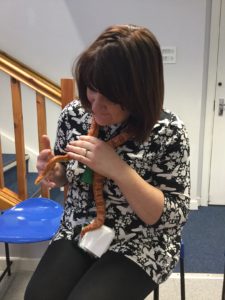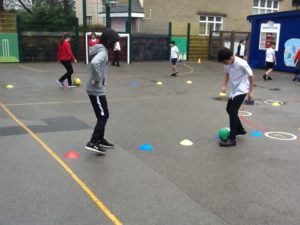Meet a creature
On Monday, we had the most amazing experience meeting a variety of unusual animals during our ‘Meet a Creature’ workshop. These included a snake, a tortoise, a tarantula, a gecko, bearded dragons and a chinchilla. Some of the children were extremely brave and held or just touched the creatures. 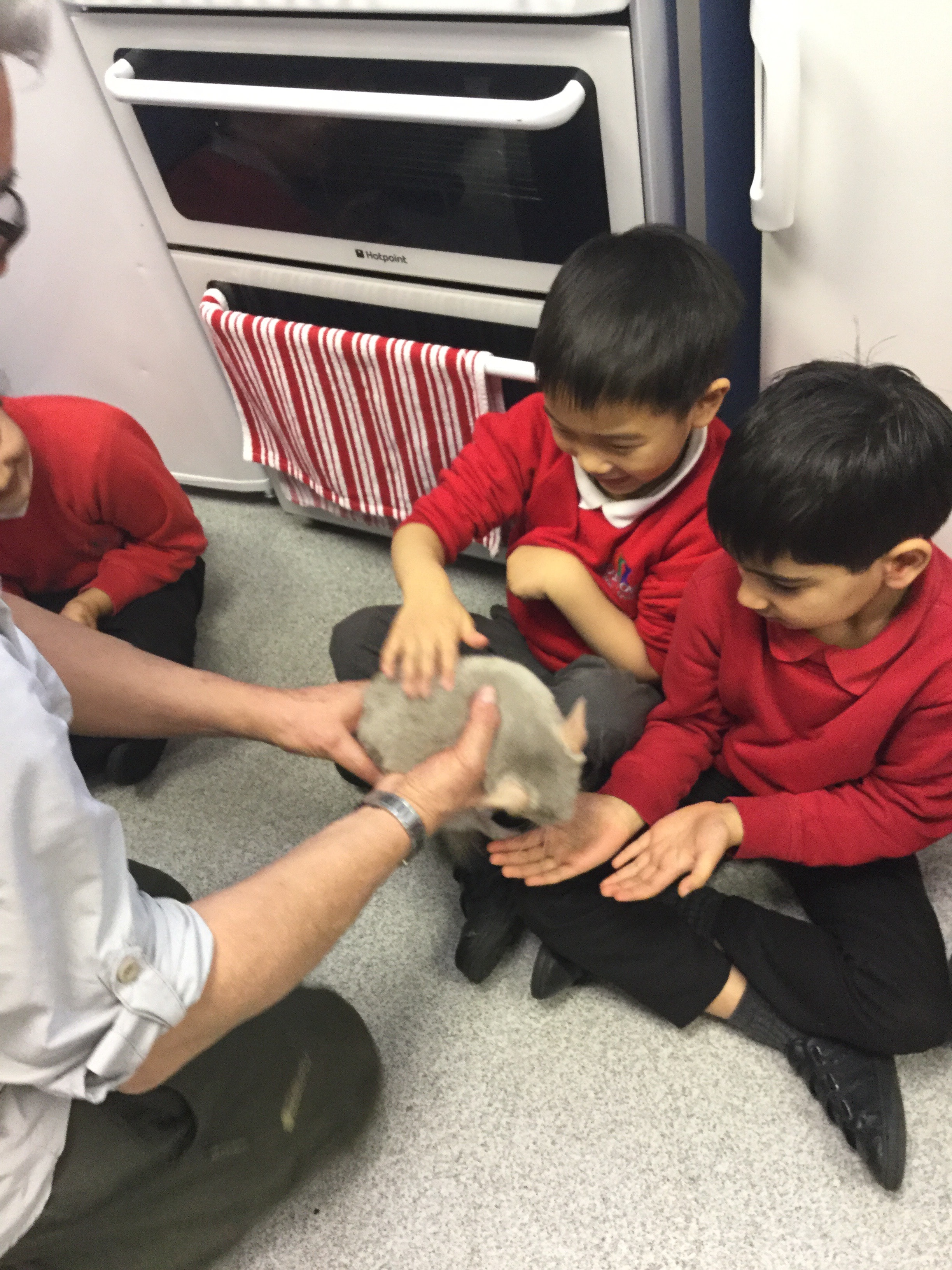

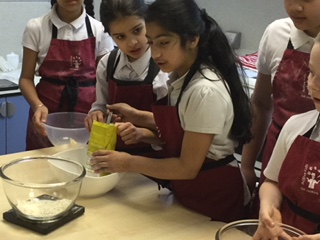

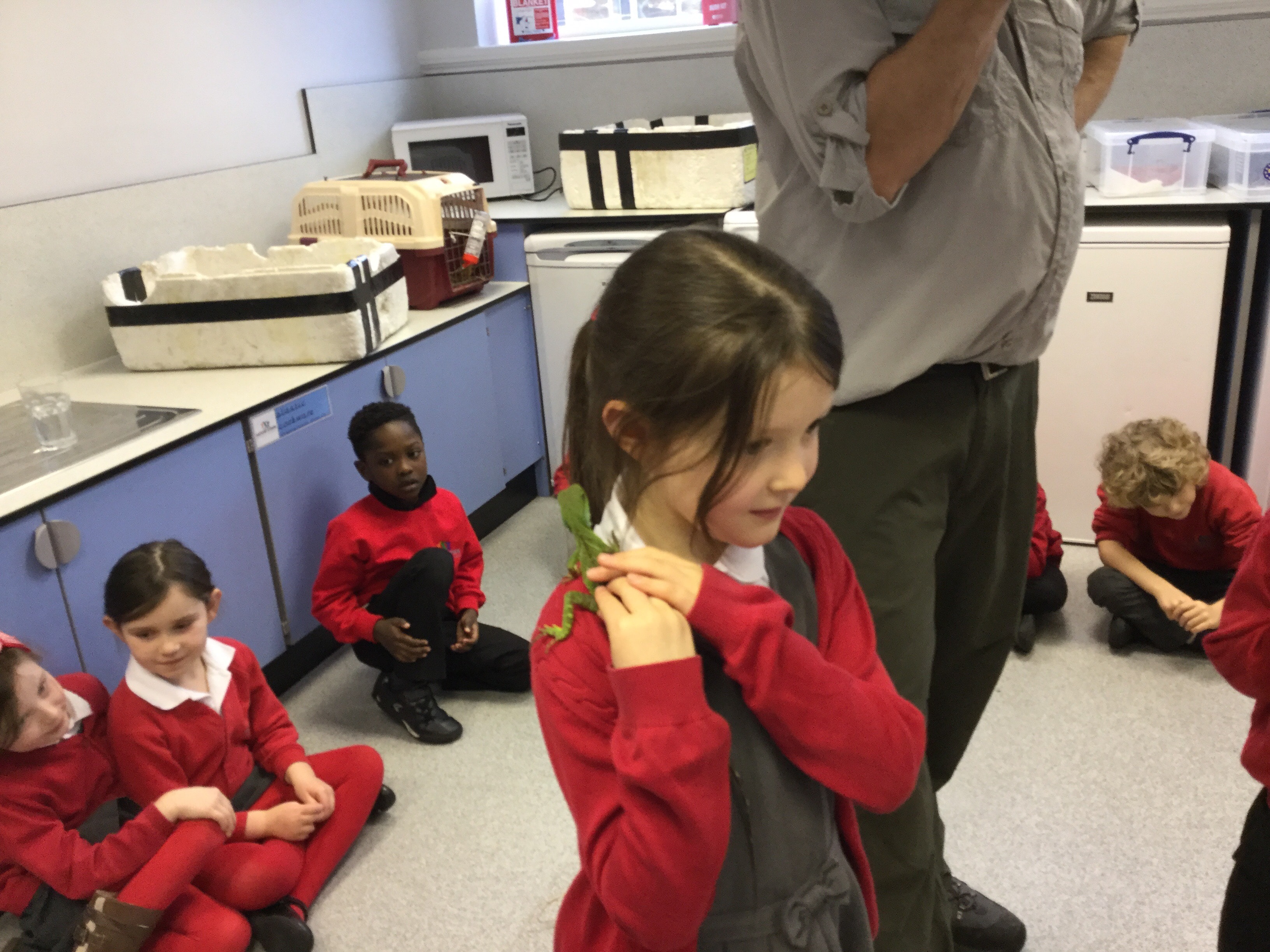
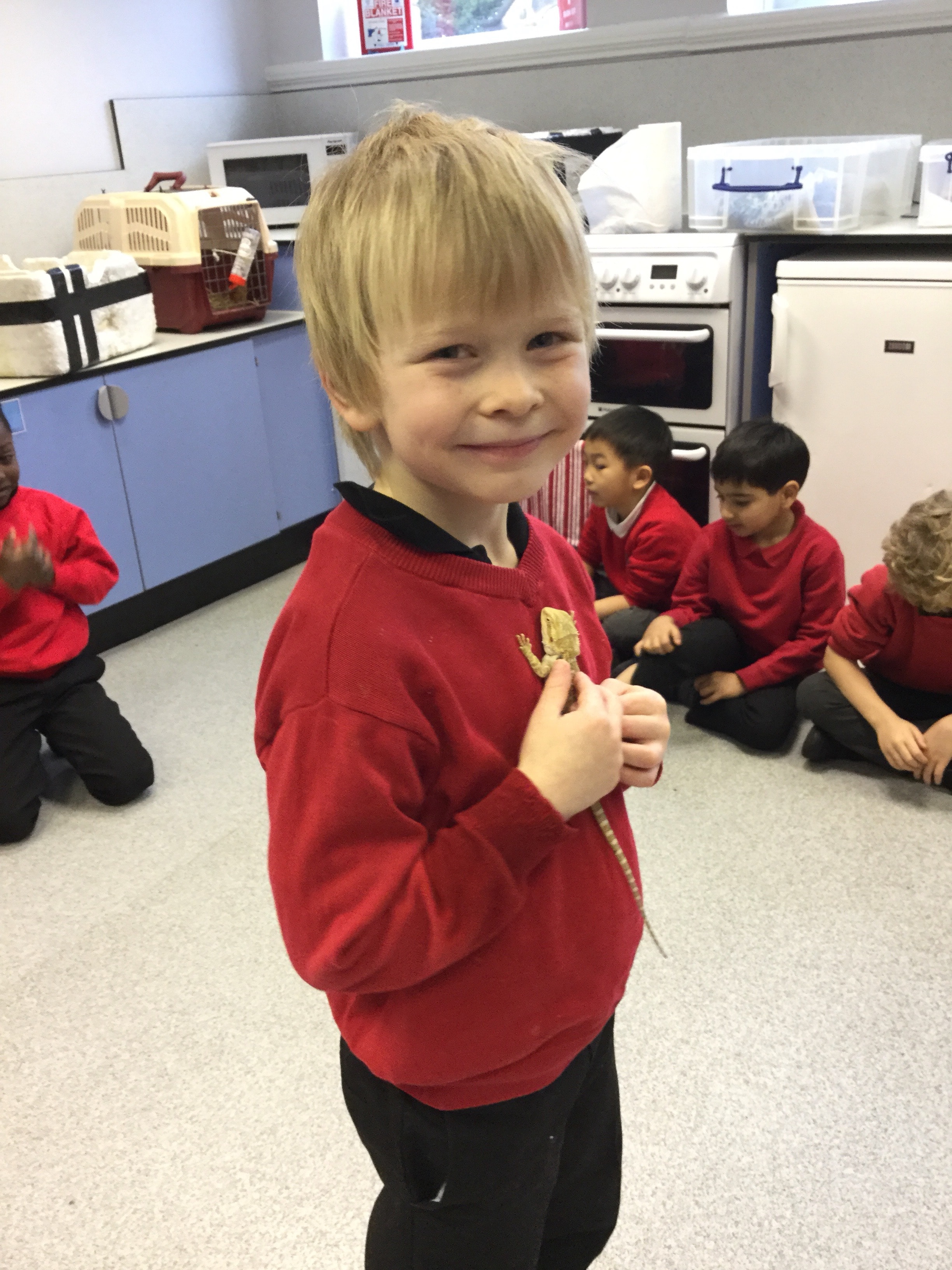
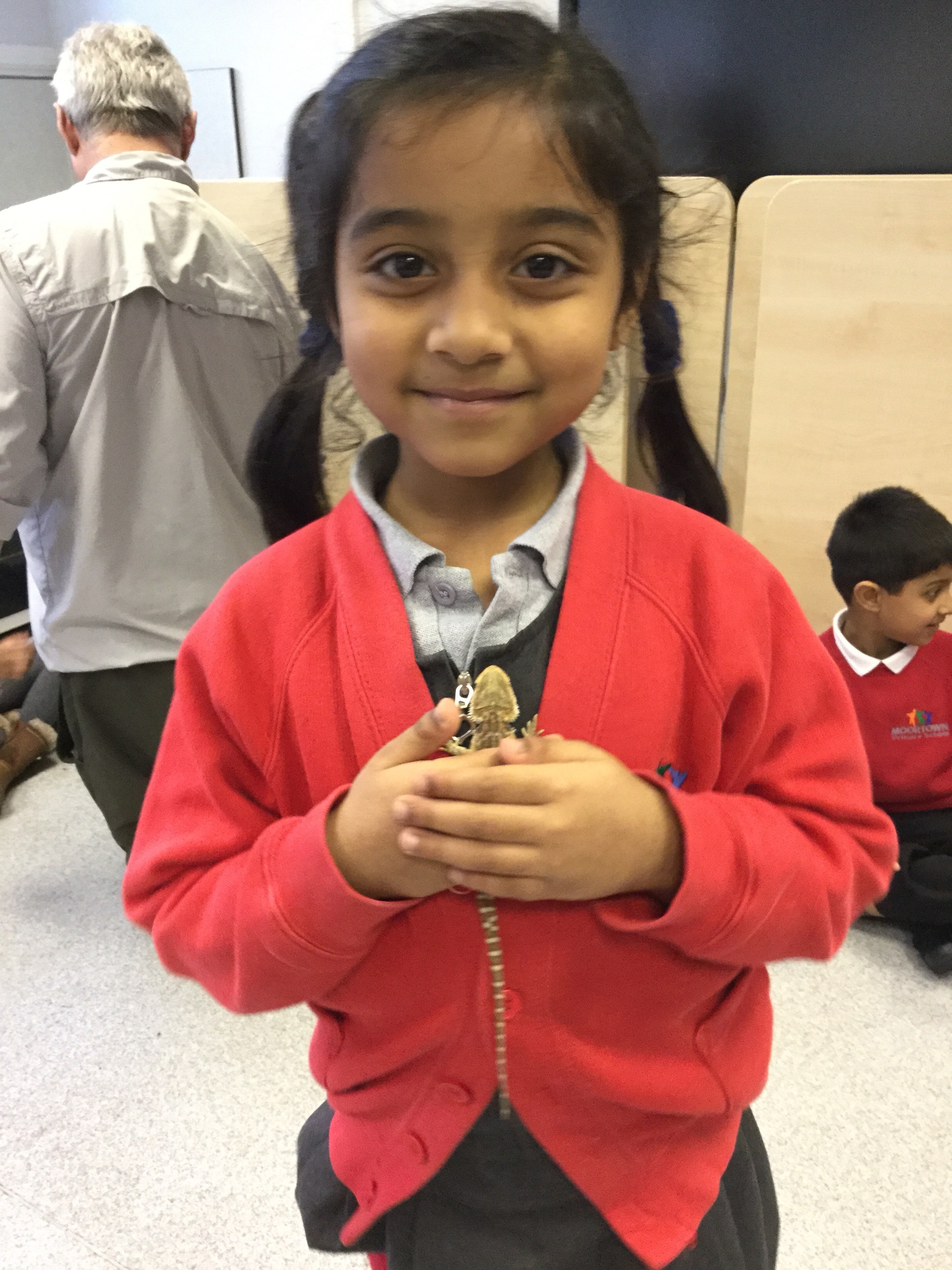
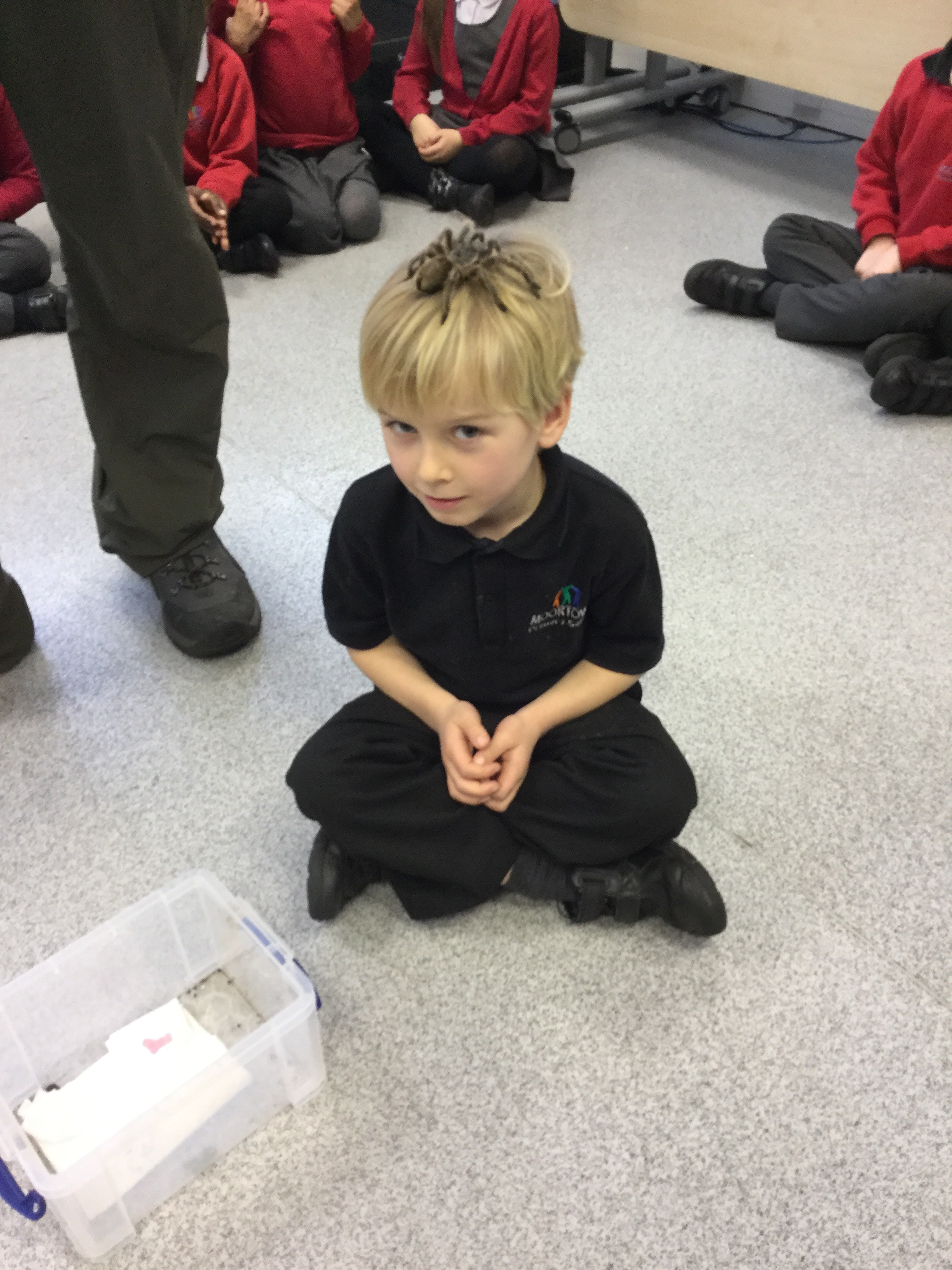

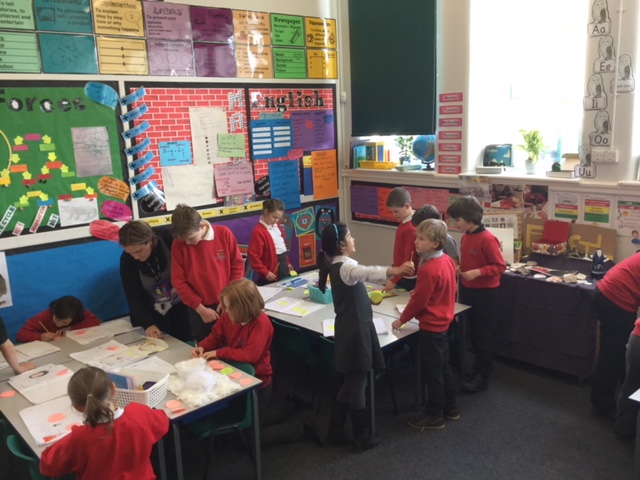

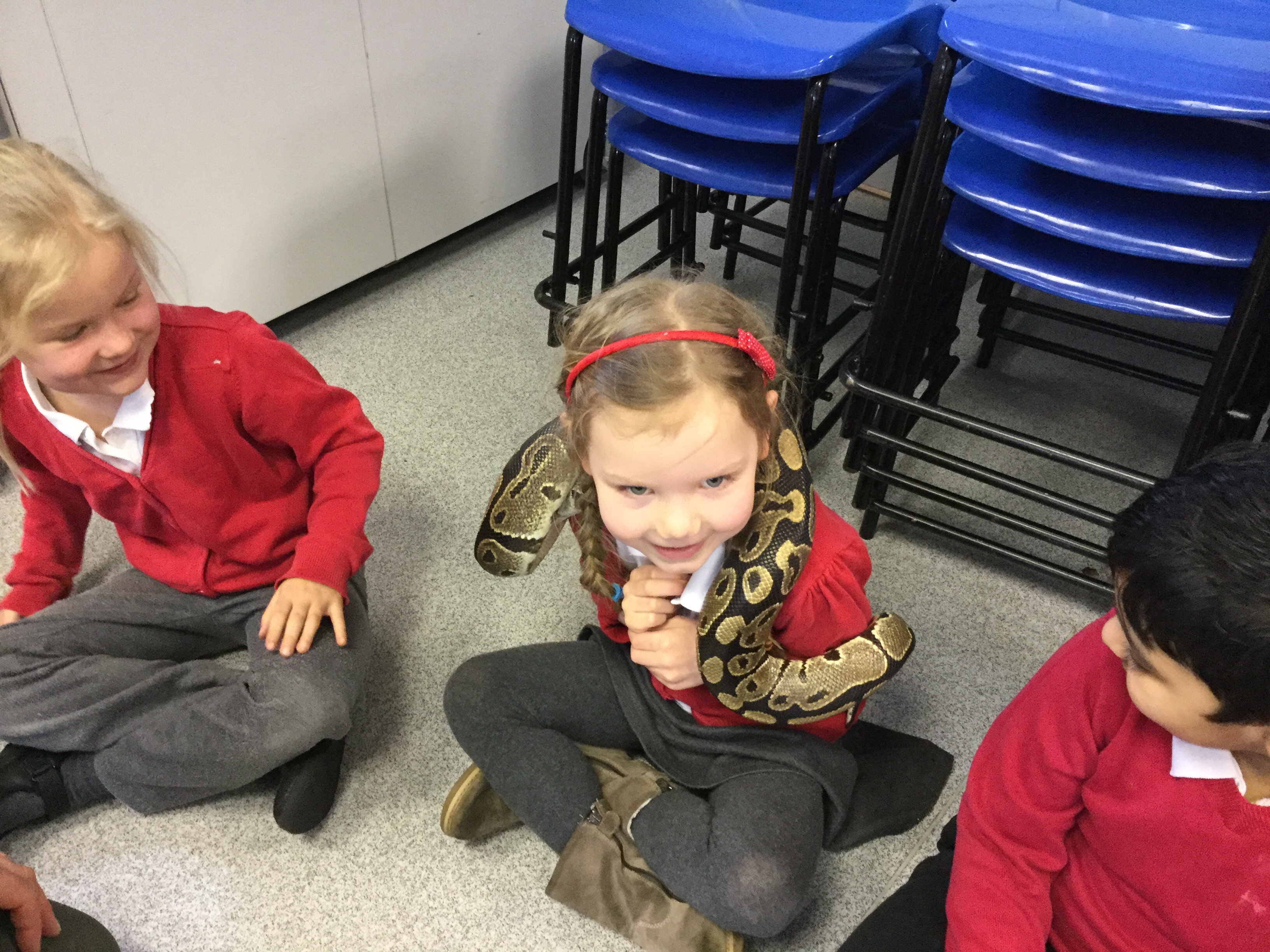

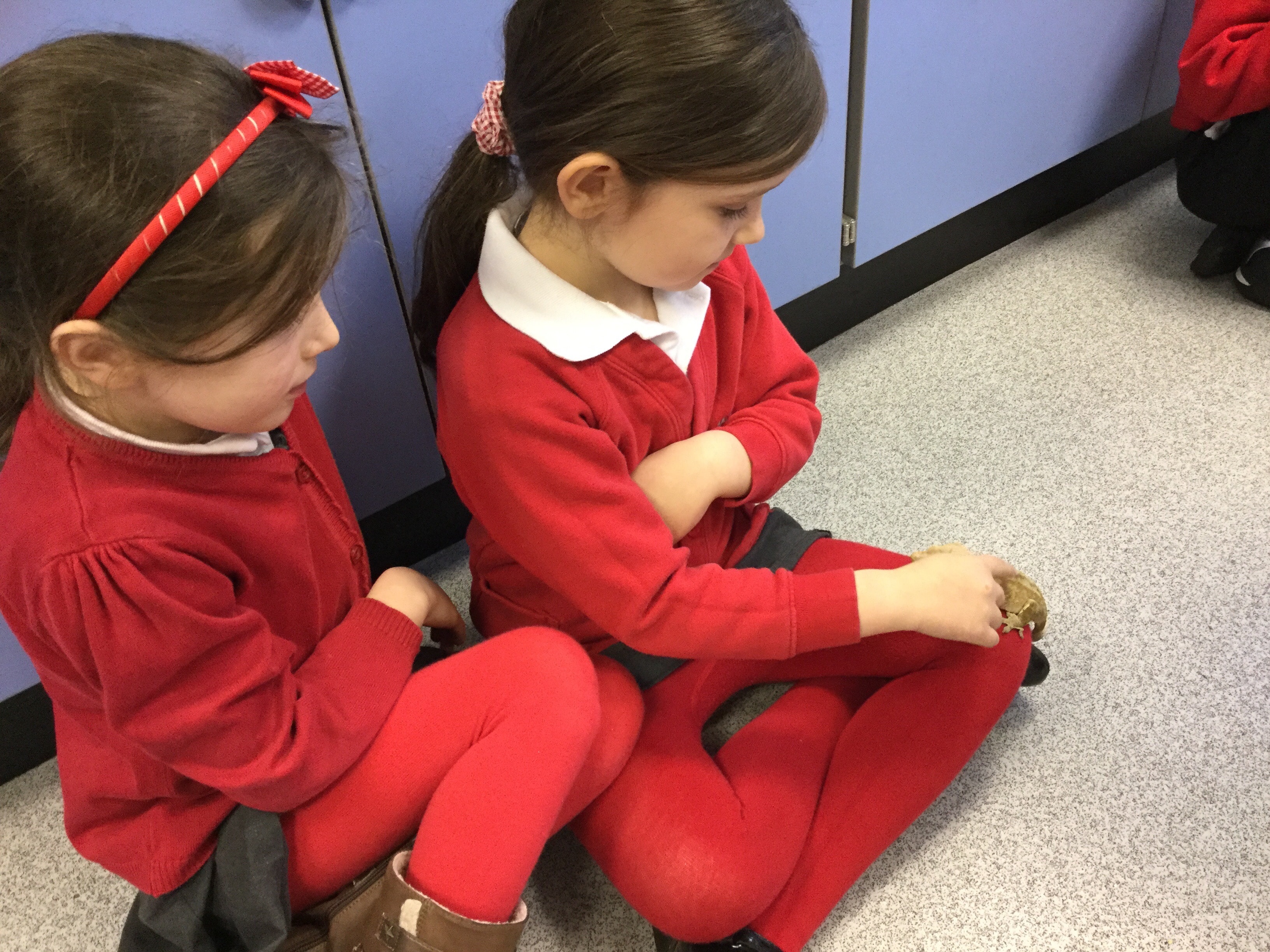 We learnt lots of interesting facts about the creatures’ habitats and how they adapt to their environments.
We learnt lots of interesting facts about the creatures’ habitats and how they adapt to their environments.
World Book Day themed menu
Catering Agency, our school meal provider, will be running a special themed menu on Thursday 01 March.

A spring spruce!
Yesterday, we took advantage of the sunny afternoon and swept, mopped and scrubbed our outside area until it sparkled!




Why not encourage your child to clean at home? It helps to develop their upper body strength, which is essential for writing.
Meet a Creature
This half term had an exciting start as our first lesson of the day involved meeting some exciting creatures. We learn all about how these creatures have evolved into what they are today as well as some interesting facts about them.
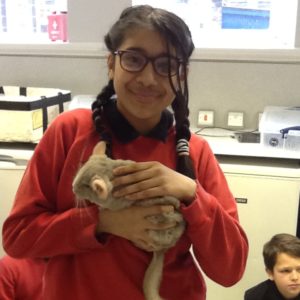
We held quite a few lizards, all of which are reptiles and have cold blood so generally live in warm environments.
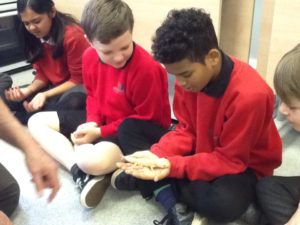

Snakes and tortoises are reptiles too but snakes have evolved to have no legs – and make an excellent scarf.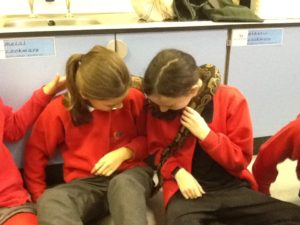
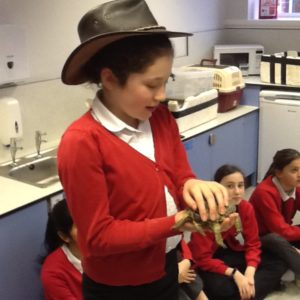
Spiders have eight eyes as well as eight legs and some of us were perfectly happy holding this one – it actually tickled a little bit.
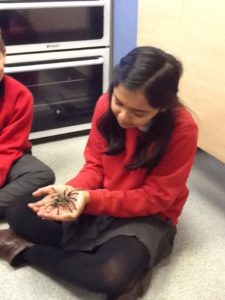
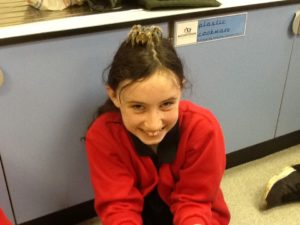
A number of us weren’t too keen on some of the creatures – lots of children who appear very confident in the playground and classroom were not so happy when confronted with a giant millipede!



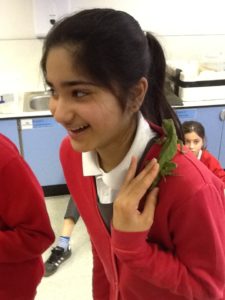
Even the staff had a go. We had to wrestle the snake off Mrs Small as she liked the look of it as a scarf… but she wasn’t so keen on the tarantula.
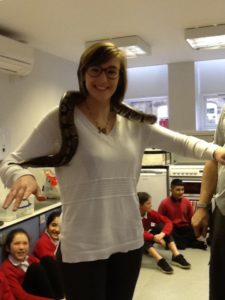
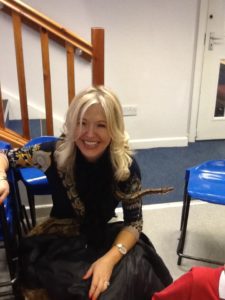
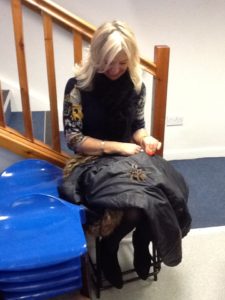 Who knew a giant millipede could make you so happy!
Who knew a giant millipede could make you so happy!
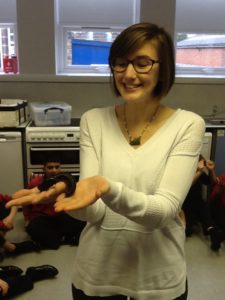
Football Coaching
In PE this half term, Year 6 are taking control of coaching each other in football. We have 6 five-a-side teams who are in charge of improving each other in preparations for the games we play.
I shall say no more as the teams’ press officers have prepared a short summary of what went on in today’s lesson.
Written by Grace: Firstly, the physio -Nishaan- gave us some stretches to do to warm up our muscles ready for the lesson. Nishaan gave us four stretches then he told us to jog around the playground to get our heart pumped. Then, our coach, Abdullah, did a drill with Nishaan and Stanley while Grace and Pavan practised some dribbling skills using cones as defenders. When we became more confident with dribbling, we included it in a little match against another team. We were not allowed to tackle because we hadn’t practised that yet but it was still fun. We played that for about 10 minutes but then tidied away and discussed our lesson before going back into class.
Written by Edward: In my group we had Edward, Aleena, Matthew, Hibba and Megan. The first part was OK when we practised skills but we took the football game way too seriously. Hibba and I were the people who thought we were
not as confident in football. I enjoyed the game but people were taking it too
seriously and were tackling when you were not supposed to. I would rate this
football lesson 7.4/10.
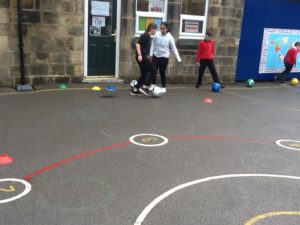
Written by Isobel: In PE, we have started to play football until the end of term. We have all been given roles: coach, manager, kit manager, physio or press manager. In my group, Harry, Nico, Pohnum, Umiamah and I, we focused on dribbling. We did a set of drills that helped our dribbling skills and at the end played a small game with extra rules to help our dribbling skills.

Written by Pippa: Today, Year 6 did football for PE. There were five people in a group and each had their own role: coach (Noah T.), manager (Archie V.), kit/equipment manager (Pheonix L.), physio (Zach I.) and press officer (Me, Pippa G.). The press officer is who wrote the post, the coach trained everyone, the manager took charge, the physio fired up and cooled down everyone on the group and the kit manager got and put away the equipment. First, the physio took charge to get everyone ready. Then, the coach trained the group to warm them up. Next, everyone had a match against another group. Finally, the press officers wrote about it.
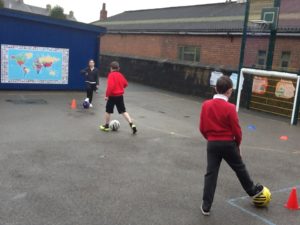
Written by Saleem: Today, Year 6 were asked to form a group of 5 and had each been given a role to play: coach (Oliver), manager (Brandon), kit/equipment manager (Iqra), physio (Owen) and the press officer (Saleem) . Children were asked to create a drill practising their dribbling skills as a group. At the end, the children played a match. Our group played very well due to some weather issues and played very well with each other. Today we had a great time and will hopefully continue this.

Written by Neive: Today we did football coaching: Enya was the physio, Neive was the press officer, Daanyaal was the kit manager, Elias was the manager and Matteo was the coach. Firstly, Enya did warm ups. We did ten star jumps, a game of tig and some stretches. After that, Matteo did our drill. Before he started, Daanyaal went and got some equipment for it. The drill involved us dribbling from cone to cone but there was a defender in our way. Next, we did a match against another team. We had to dribble to a line then stop it exactly on the line. We played for about ten minutes. Penultimately, we tidied away. Finally, we discussed the pros and cons of our session – Elias led it.⚽
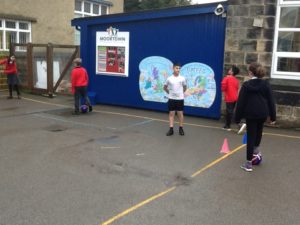
Living and Learning – Vampire cough and sneeze

Well done to Saahir who we spotted using this technique this morning without prompting.
Getting close to the creatures
Today, we met a variety of unusual creatures in our Meet a Creature workshop. These included a tortoise, a snake, a tarantula, bearded-dragons, a gecko and a chinchilla. Some children, and adults, were brave enough to hold or just touch the creatures. We learnt lots of facts about the animal’s habitat and how they adapt to their environment.
Did you know that bearded dragons can drink through their skin?












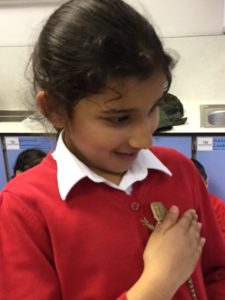
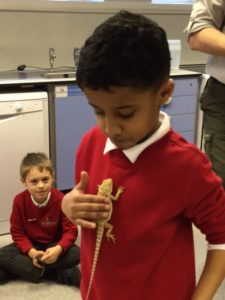

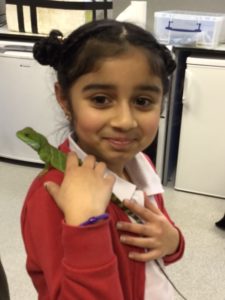

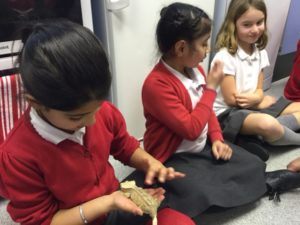


Amazing animals!
Today, we were fortunate to be joined by ‘Meet a Creature‘. During this hands-on workshop, we learnt all about evolution and inheritance (part of the science National Curriculum for Year 5) whilst handling some interesting, rare animals.
We all had the opportunity (which some of us declined) to hold each animal and learnt lots of facts about how it has evolved over time – we learnt other fun facts, too!
Here’s a few images of us holding some of the animals:
(Warning: look away now if you’re scared of snakes, tarantulas, bearded-dragons, geckos, chinchillas or children!)
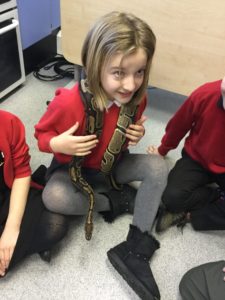
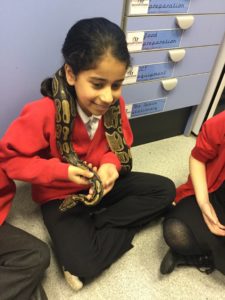

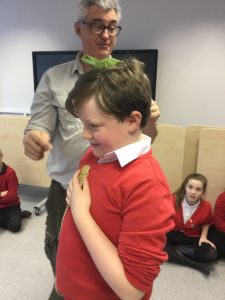
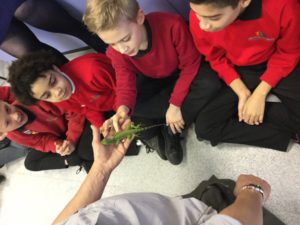
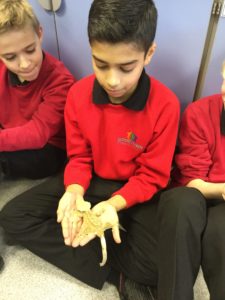

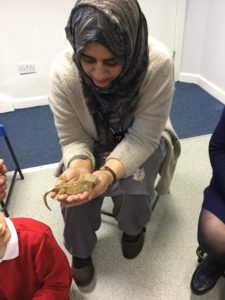
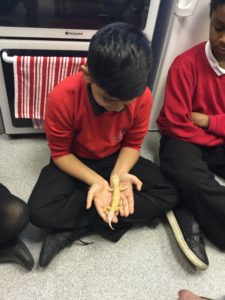
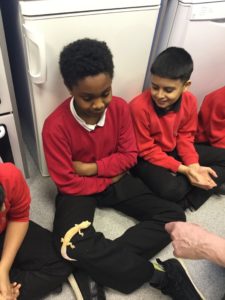


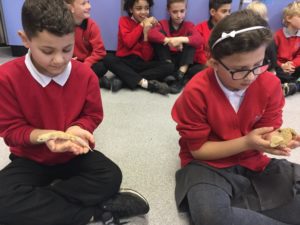
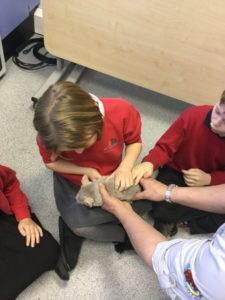
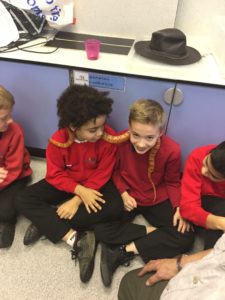

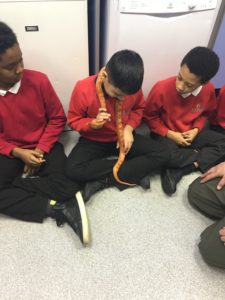
Meet a creature
This afternoon, Year 4 came face to face with some fascinating creatures. We held and learnt about a range of mammals, reptiles, amphibians, and mini-beasts. This was a real hands-on experience and every child was shown how to handle the animals with care and respect.
